Romanian translation
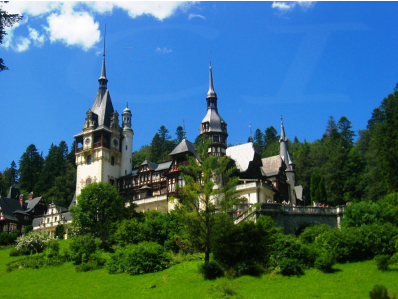
Are you in search for specialized, high-quality and quickly delivered Romanian translation services? Target Language Translation Services offers high quality Romanian to English and English to Romanian translation services with our professional native Romanian linguists. Our professional linguists carry out the translations in complete compliance with internationally recognized standard of ISO 9001-2005 certificate, which will ensure that your documents are presented to your clients, collaborators, or potential partners in an impeccable way.
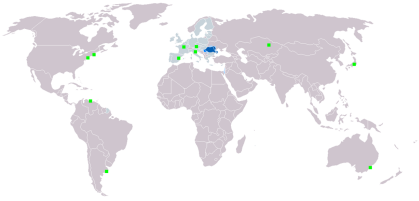
Blue: region where Romanian is the dominant language. Green: areas with a notable minority of Romanian speakers.
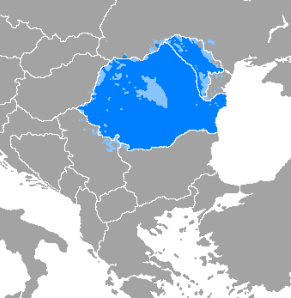
Distribution of the Romanian language in Romania, Moldova and surroundings.
Romanian (limba română)
Romanian is a Romance language spoken mainly in Romania, Moldova and Transnistria. Other countries with a significant number of Romanian speakers include Serbia, Ukraine, Hungary, Italy, Spain, Germany, Russian, Israel, the USA and Canada. In 2016 there were about 24 million speakers of Romanian worldwide, including about 17 million in Romania, 2.5 million in Moldova, 177,000 in Transnistria, 1.1 million in Italy, 800,000 in Spain and 327,000 in Ukraine.
Romanian is a member of the Balkan-Romance or Eastern Romance branch of the Romance languages. It developed from Vulgar Latin, which was brought to the region by the Romans, who conqured it in 105-106 AD. At that time the area that corresponds to modern Romania, Moldova and parts of Bulgaria, Serbia, Hungary, Poland, Slovakia and Ukraine, was known as Dacia. It became a province of the Roman Empire known as Dacia Traiana.
Romanian retains a number of features of Latin, such as noun cases, which have disappeared from other Romance languages. It also contains words from the surrounding Slavic languages, from French, Old Church Slavonic, German, Greek and Turkish, and also from Dacian, an extinct Indo-European language that was spoken in Dacia until about the 7th century AD.
Romanian first appeared in writing during the 16th century, mainly in religious texts and other documents. The earliest known text in Romanian, which dates from 1521, is a letter from Neacşu of Câmpulung to the mayor of Braşov. Neacşu wrote in a version of the old Cyrillic alphabet similar to the one for Old Church Slavonic, which was used in Walachia and Moldova until 1859.
From the late 16th century a version of the Latin alphabet using Hungarian spelling conventions was used to write Romanian in Translyvania. Then in the late 18th century a spelling system based on Italian was adopted.
A version of the Cyrillic alphabet was used in the Soviet Republic of Moldova until 1989, when they switched to the Romanian version of the Latin alphabet.
Old Romanian alphabet
This version of the Latin alphabet was used during the transition from the Cyrillic to the Latin alphabets. It is still used, though mostly in church writings.
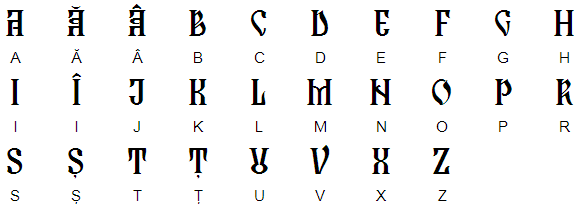
Cyrillic alphabet for Romanian (16th century - 1860)
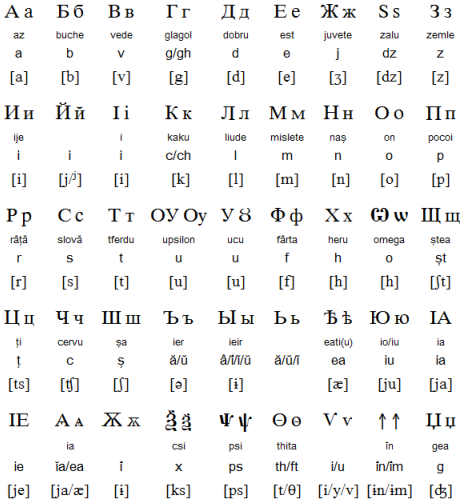
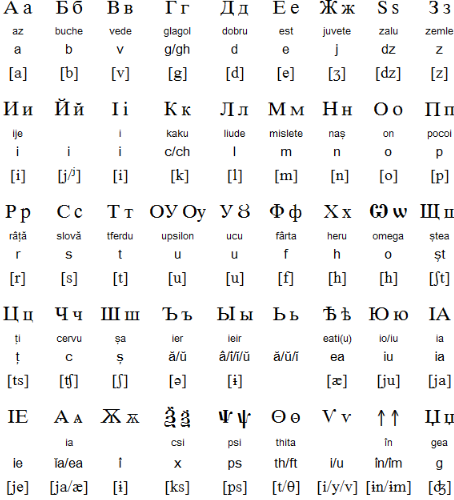
Modern Romanian alphabet (Alfabetul limbii române)
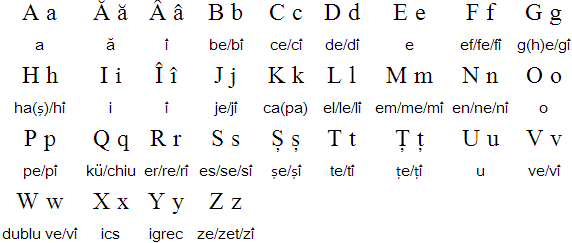
Romanian pronunciation
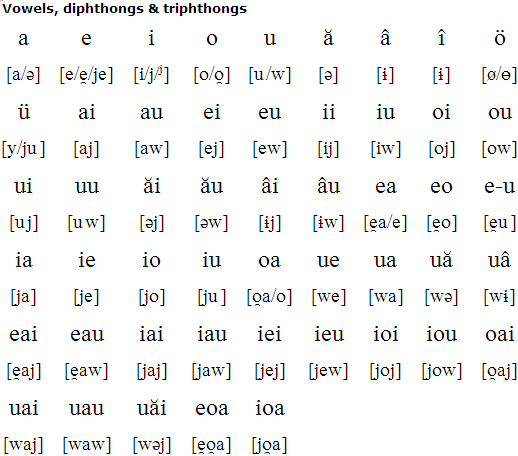
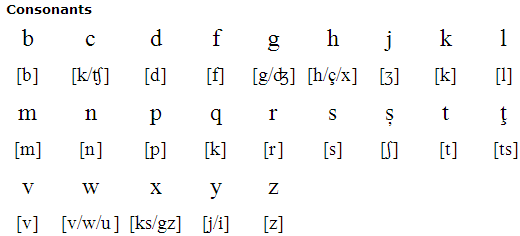
Notes
c = [ʧ] before i or e, but [k] elsewhere
g = [ʤ] before i or e, but [g] elsewhere
ch = [k] before i or e
gh = [g] before i or e
i = [i̯] before vowels, but [i] elsewhere. When i appears at the end of a multi-syllable word, it isn't pronounced, but palatalizes the preceding consonant. For example, vorbiţi (you all talk) = [vorbitsʲ]. The only exceptions to this are when words end in a consonant + r + i, and verb infinitives, e.g. a vorbi (to talk).
To represent a full [i] sound at the ends of words, the digraph "ii" is used, e.g. copii (children) = [kopi].
iii at the end of a word is pronounced [iji], e.g. copiii (the children) = [kopiji].
u = [u̯] before vowels, but [u] elsewhere
k, q, w and y only appear in loan words
Romanian is one of the few languages that uses the letters s and t with a comma below (ș, ț). Using a cedilla instead (ş, ţ) is considered incorrect by the Romanian Academy.
Just contact us to get more information and a no-obligation quote. Our project managers can be reached via telephone, email, or the form. We look forward to serving you.
For more information about Romanian translation,
call us or add wechat today at +86-13616034782
or send us an email to:info@target-trans.com